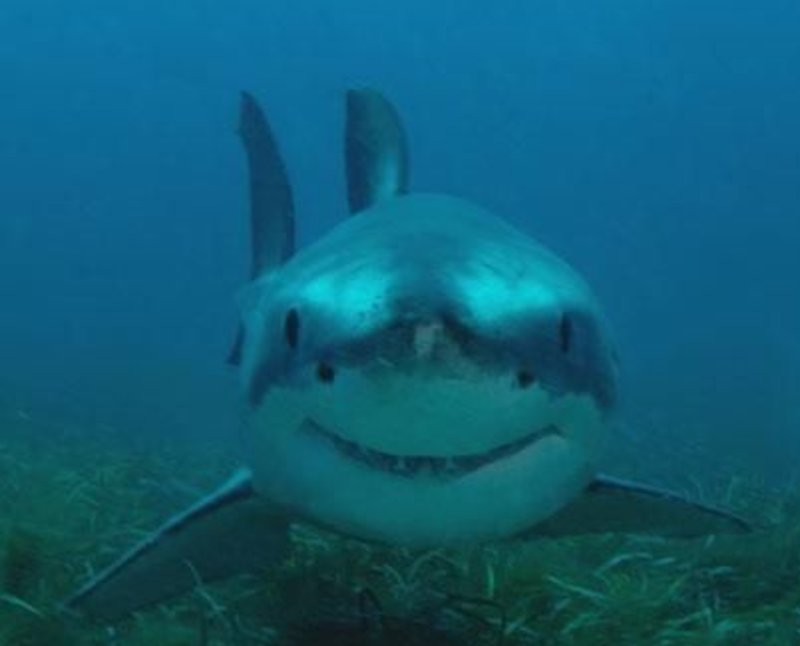
Imagine the ocean as a vast, swirling maze. Great whites need to find their way through this maze while also keeping in touch with one another. It’s like a high-stakes game of hide and seek, where knowing how to read the environment is crucial. The methods they use to navigate their territory and communicate with each other are as extraordinary as they are vital for survival. Let’s dive into this captivating subject to uncover how these sleek predators move through and talk in their underwater world.
The Great White’s Keen Sense of Smell
One of the most impressive tools in a great white shark’s kit is its sense of smell. Picture this: they can detect blood in the water from miles away! This ability allows them to track down prey effectively. Sharks have a specialized organ called the olfactory bulb that’s responsible for processing smells. When they catch a whiff of something familiar, it sends them on a mission.
Each great white has a *unique scent profile* just like humans have different scents tied to things like food or flowers. This means they can easily distinguish their prey, including seals and fish. When they detect the scent of a seal, it’s like a beacon guiding them right to dinner. So, next time you see one cruising through the waves, remember—it’s not just hunting. It’s also on the lookout for scents in its environment, navigating with precision.
Using Electrosensation to Navigate
Sharks have an incredible ability called electrosensation, which allows them to detect even the faintest electrical impulses. This sense is crucial for navigation and hunting. Imagine being able to see the electric signals given off by every living creature around you! Great whites have special organs, known as *ampullae of Lorenzini*, that help them pick up these signals.
These organs are like tiny sensors located around their snouts. They can feel the electrical fields generated by muscles and nerves of potential prey, even if it’s hidden in the sand. This means when a great white is on the hunt, it’s not just relying on sight or smell—it’s also tuned in to the electrical signals in the water. This multi-sensory approach gives them an edge, helping them navigate complex underwater landscapes while tracking down food.
How They Use Sight and Hearing
While smell and electrosensation are key, great whites also rely heavily on their sight and hearing. Think of their eyes like high-tech cameras—capable of seeing in low light and detecting movement from afar. This allows them to spot prey even in murky waters. Their eyes have a special layer called the *tapetum lucidum*, which reflects light and enhances their vision.
As for hearing, great whites are highly sensitive to vibrations in the water. They can pick up sounds from a distance, whether it’s the splashing of a seal or the sounds created by other marine animals. When they hear the sounds of potential prey, it’s like tuning into a favorite song that tells them where to go next. The combination of these senses allows them to move smoothly through their environment, making them one of the ocean’s best navigators.
Shark Communication: More Than Meets the Eye
You might assume that sharks aren’t chatty creatures, but they actually have their own ways of communicating! While they don’t have vocal cords to talk, they rely on body language and chemical signals to convey their feelings. For example, when a great white is feeling aggressive, it might display certain behaviors like a quick tail whip or a sudden change in speed.
Sharks also communicate through *pheromones*, which are chemicals released into the water. These signals can inform other sharks about their mood or reproductive readiness. It’s like a secret language that helps them connect with one another without making a sound. This chemical communication is especially important during mating season, when they need to attract partners.
Social Structures and Hierarchies
Although great whites are often seen as solitary animals, they do have social structures. Studies have shown that they can form loose groups, especially when hunting. When they congregate, the sharks often display behaviors that signal their roles within the group. For instance, one shark might lead while the others follow, resembling a hierarchy.
You might find it surprising that these sharks can show differing levels of aggressiveness depending on their social context. When they’re in a group, they might be less aggressive towards one another than when they are alone. This social behavior can help them coordinate during hunts and improve their chances of catching prey. It’s not just about being alone; the social aspect plays a crucial role in their navigation and communication.
The Importance of Their Navigation Skills
Understanding how great white sharks navigate is essential for many reasons. For example, their ability to accurately move through vast ocean territories means they can efficiently hunt and thrive. This capability also helps maintain the balance of marine ecosystems. As apex predators, they play a critical role in keeping prey populations in check and ensuring healthy ocean habitats.
Moreover, learning about their navigation can provide insights into how these creatures adapt to changing environments, especially with the impact of climate change on oceans. As temperatures rise and habitats shift, understanding their navigation helps scientists and conservationists protect these magnificent animals and their ecosystems.
In summary, great white sharks are far more than just fearsome predators. They navigate their watery world with an impressive array of skills that include an extraordinary sense of smell, electrosensation, sharp eyesight, and sophisticated communication methods. Their social structures and navigational abilities play an essential role in their survival and the health of marine ecosystems.
So the next time you think about these powerful creatures, remember: they’re not just about strength and size. There’s a complex, intriguing world of navigation and communication happening beneath the waves. Understanding these aspects of great whites not only enhances our appreciation for them but also underscores the importance of conserving their ocean homes.

